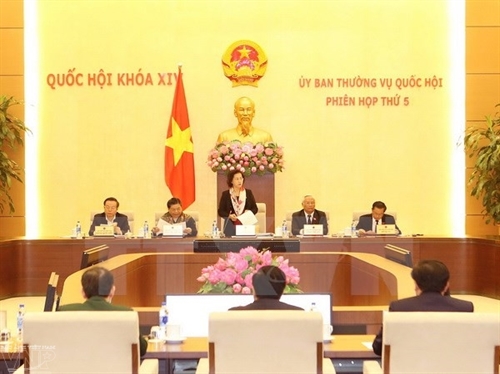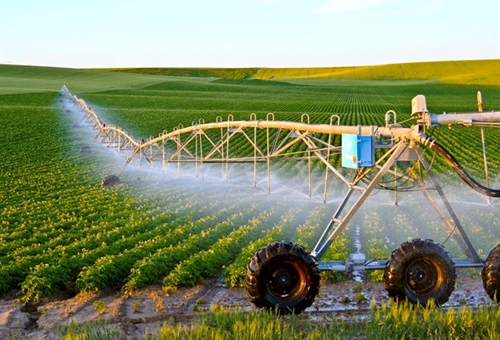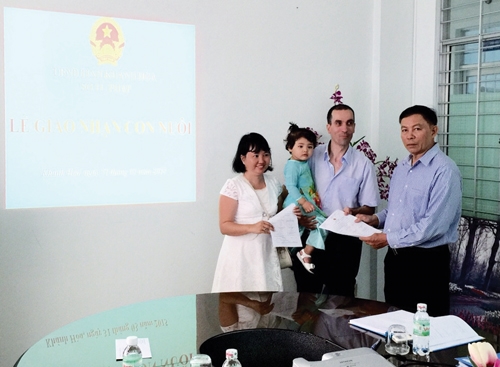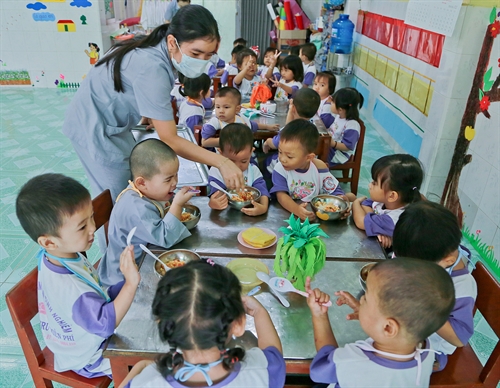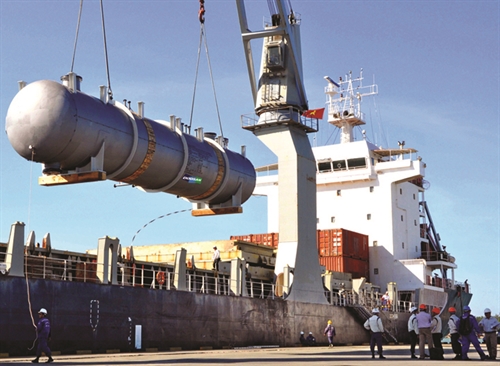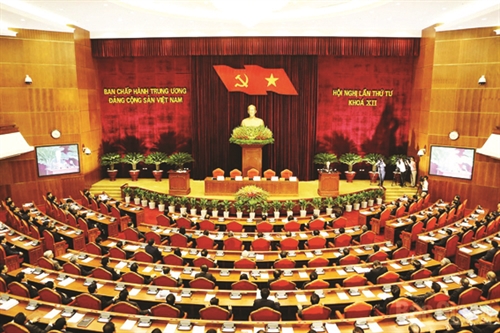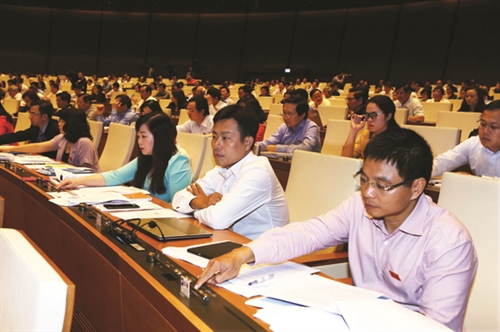At the beginning of the Year of the Rooster, ministers share with Tin Tuc newspaper, Vietnam News Agency, breakthrough solutions to implementing socio-economic tasks in 2017 in the spirit of a constructional and active government.
 |
| Mai Tien Dung Minister-Chairman of the Government Office__Photo: VNA |
Stabilizing macroeconomy and controlling inflation
The Government in 2017 will attach importance to measures to stabilize the macroeconomy and control inflation in order to achieve a growth rate higher than 2016 by raising productivity, quality and competitiveness. The Government has set three important targets for 2017: the GDP growth rate of 6.7 percent, an average inflation rate of 4 percent, and completion of the budgetary expenditure and revenue plan.
To achieve the above objectives, the ministries responsible for macroeconomic administration must closely watch the developments and update the situations of major economic partners so as to come up with appropriate policies. The State Bank of Vietnam should implement proactive and flexible policies, increase the quality of credit growth, paying attention to ensuring a proper credit structure, cut down interest rates, especially medium- and long-term ones. The Ministry of Finance should draw a roadmap to regulate the prices of state-managed essential commodities and services, and manage budgets in a proactive and strict manner.
Ministries, sectors and localities should further implement Government Resolution No. 19/NQ-CP, on improving the business environment and increasing national competitiveness to reach the standards of the ASEAN-4 nations. Specifically, they are required to synchronously review regulations for improving the investment and business environment, supporting small- and medium-sized enterprises in accessing capital and encouraging start-up businesses. Apart from the three strategic breakthroughs, importance should be attached to innovation and science and technology as the spearhead in increasing the competitiveness of the economy.
It is necessary to continue restructuring public investment, restructuring and renewing state enterprises, and restructuring credit institutions in combination with settling non-performing loans. The master plans on restructuring these fields will be tabled to the Prime Minister in the first quarter of the year.
As implementation is the weakest point, ministries, sectors and localities must issue action plans, identifying specific implementing units and agencies, and regularly supervise the implementation of such plans against the set schedules.
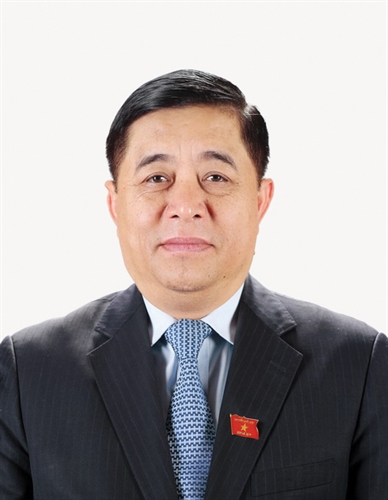 |
Nguyen Chi Dung Minister of Planning and Investment __Photo: VNA |
| Nguyen Chi Dung |
Focusing on seven urgent solutions for economic restructuring
In 2017, the Government continues implementing the Party Central Committee’s Resolution No. 05-NQ/TW on major policies to further renew the growth model and raise growth quality, labor productivity and economic competitiveness, and the National Assembly’s Resolution No. 24/2016/QH14, on the economic restructuring plan for the 2016-20 period. These resolutions have set out seven urgent and key solutions. They are:
(i) Stepping up public investment restructuring, putting an end to scattered investment, corruption, wastefulness, and delayed payment of invested funds so as to make a turning point in raising the efficiency of public investments;
(ii) Restructuring the state budget and managing public debts in a safe and sustainable manner, strictly practicing thrift in spending within the capacity of the economy, only borrowing loans within the repayment capacity, and tightening financial and budgetary rules and discipline;
(iii) Effectively handling weak credit institutions, fundamentally and thoroughly restructuring credit institutions in association with handling non-performing loans, step by step handling and abolishing cross-investment and cross-ownership, and accelerating the withdrawal of commercial banks’ investments in non-core business fields;
(iv) Speeding up the equitization of, and withdrawal of state capital from, state enterprises in a transparent and cautious manner under the market mechanism; drastically handling state enterprises which are operating at a loss;
(v) Promoting the reorganization and restructuring of public non-business units and organizations, allowing them to operate with absolute autonomy;
(vi) Promoting the spirit of startup, innovation and creation, and strongly supporting and developing enterprises in both quantity and quality; and,
(vii) Implementing land accumulation, and effectively restructuring agriculture in connection with building a new countryside in response to climate change.
 |
| Dinh Tien Dung Minister of Finance __Photo: VNA |
Determined to increase budget collection
This year, Vietnam’s economy is still predicted to face many challenges which may affect the implementation of financial and budgetary tasks. However, the Ministry is still determined to collect VND 1.21 quadrillion in state budget revenue, which is higher than that of 2016 (VND 1.094 quadrillion). To realize this target, the Ministry will focus on the following five priorities:
Firstly, we will promote the completion of financial institutions and mechanisms toward consistency, publicity, transparency and stability and conforming with the requirements of the actual socio-economic development and international integration process.
Secondly, the Ministry will effectively implement the National Assembly’s laws and resolutions, especially those effective from the beginning of 2017. It will strengthen financial and budgetary rules and discipline; reduce to the utmost the issuance of new policies without sufficient resources for implementation; guarantee thrifty and efficient state budget spending according to assigned cost estimates; and closely control public debts and budget deficit.
Thirdly, we will further improve the investment and business environment, creating every favorable condition for the development of businesses, with a focus on removal of obstacles in tax and customs policies, accounting and audit regulations, and finance-related administrative procedures.
Fourthly, we will consistently adhere to the principle of price management under the market mechanism, speeding up the application of state-regulated market prices for important, essential goods.
Lastly, the Ministry will effectively combine fiscal and monetary policies to control inflation, stabilize the macroeconomy and achieve the targeted GDP growth rate. Another measure is to enhance the transparency of financial and budgetary information according to regulations.
 |
| Tran Tuan Anh Minister of Industry and Trade__Photo: VNA |
Carrying out thorough reforms
The Ministry of Industry and Trade in 2017 will give priority to developing the domestic market and boosting exports to be higher than last year’s figures. In developing the domestic market, it will attach importance to promoting the retail market, avoiding “losing right at the home market.” The Ministry is working on a strategy for development of the retail market in the integration context. It will step up the fight against smuggling and trade frauds and ensure supply-demand balance particularly for essential goods during festive and new year holidays. We will work with related ministries and sectors to quickly put into place a technical barrier system to protect domestic production. The Ministry of Industry and Trade will strive to ensure electricity supply for the whole economy and social demands by constructing major power plants, developing the transmission system, enhancing energy conservation, among others.
Particularly, the Ministry will continue strongly reshuffling the apparatus of the industry and trade sector and simplify administrative procedures, creating most favorable conditions for enterprises in their import and circulation activities.
 |
| Nguyen Xuan Cuong Minister of Agriculture and Rural Development_Photo: VNA |
Untying four bottlenecks in agricultural production
In 2017, the existing challenges facing the agricultural sector are likely to become fiercer. Other countries’ protectionism policy will affect the import and export of agricultural products. Climate change will cause unpredictable consequences (northeast monsoon causing floods in Central and South Vietnam). Epidemic risks will affect animal husbandry. These require localities to anticipate difficulties and work out solutions to efficiently and positively developing agriculture production.
This year, there are four bottlenecks which the sector must overcome to develop agricultural production, including accumulation of land for agricultural production; conversion of 500 - 700 thousand ha under rice into fruit orchards and fish ponds; mobilization of enterprises to invest in agriculture; and effectively implementing the credit package of VND 60 trillion for hi-tech agricultural development.
Besides, the sector needs to implement various solutions to restructuring the agricultural production to adapt to climate change, turning disadvantages into advantages, investing in developing key agricultural products, building works for prevention of seawater intrusion and retention of fresh water. It will also effectively implement the program on building a new countryside.
 |
| Phung Xuan Nha Minister of Education and Training__Photo: VNA |
A year of listening, renovation and action
The goal set by the educational sector for 2017 is to enhance discipline and order while comprehensively improving educational quality in all schools. Preschools will continue renovating child care and education activities according to the viewpoint of taking children as the center. General education will attach importance to education about ethics, life styles and skills, and civic responsibilities to the society and community. Higher education institutions will further improve the quality of training of human resources, particularly high-quality human resources.
In 2017 the sector will focus on reviewing and assessing the current quality status of teaching staffs and education administrators against the set standards and requirements, then developing training programs and plans appropriate to them.
The sector will look to effectively implement the plan on solidification of schools, classrooms and public houses for teachers and lure investment sources other than the state budget to upgrade teaching and learning facilities and equipment.
To realize the above-mentioned goals, the whole sector will make every effort to implement the nine groups of tasks and five specific solutions laid down for the 2016-17 school year and following years.
Education is a long-term cause. The education sector needs persistent support and unswerving confidence from teachers, administrators, parents and the whole society, which is an important driving force for the sector to accomplish the set goals and tasks.
 |
| Le Vinh Tan Minister of Home Affairs__Photo: VNA |
Determined to rearrange the apparatus
Ministries, sectors and localities should be determined to restructure their apparatuses, push ahead socialization, and streamline personnel along with reforming the official-duty regime. They should reform the state administration in a synchronous manner, focusing on scrapping cumbersome administrative procedures for organizations, individuals and enterprises. They are also urged to practice thrift, combat wastefulness and prevent loss of state funds and assets.
Regarding personnel management, ministries, sectors and localities should overcome problems in the assignment and decentralization of management of officials, and in the appointment process. They must screen and immediately replace or dismiss officials who work inefficiently, show poor capabilities and moral quality, and low prestige.
At the same time, it is necessary to continue renovating the salary policy and formulating and implementing the housing policy for civil servants.- (VLLF)

